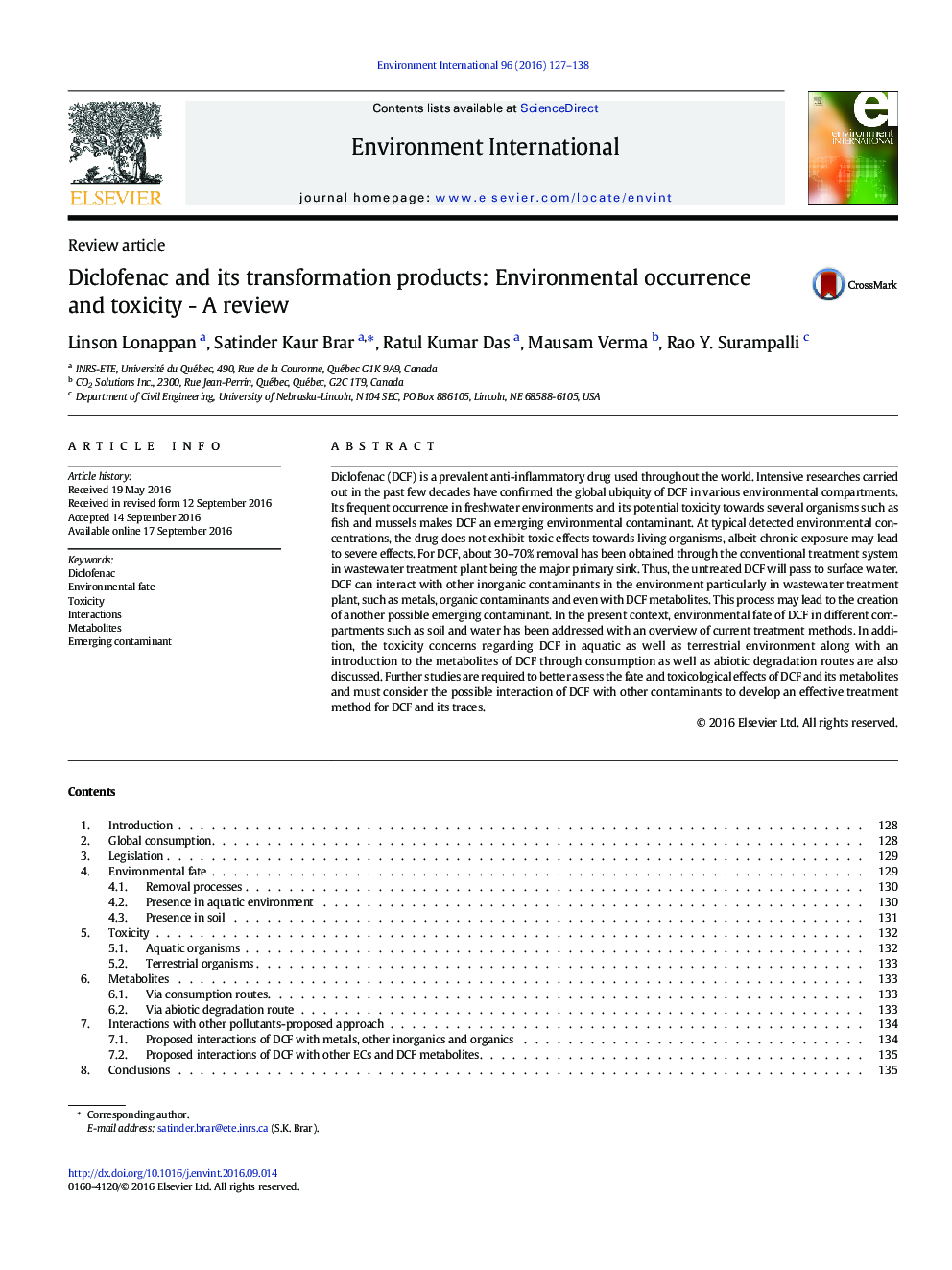| کد مقاله | کد نشریه | سال انتشار | مقاله انگلیسی | نسخه تمام متن |
|---|---|---|---|---|
| 6312667 | 1619034 | 2016 | 12 صفحه PDF | دانلود رایگان |
- A review on the occurrence, toxicity and metabolites of diclofenac
- Current status of diclofenac in environment is discussed with treatment methods.
- Legislative measures to control the drug are briefly covered with toxicity studies.
- The toxicity of diclofenac metabolites in the environment is poorly understood.
- Potential interactions of diclofenac with other pollutants are briefly discussed.
Diclofenac (DCF) is a prevalent anti-inflammatory drug used throughout the world. Intensive researches carried out in the past few decades have confirmed the global ubiquity of DCF in various environmental compartments. Its frequent occurrence in freshwater environments and its potential toxicity towards several organisms such as fish and mussels makes DCF an emerging environmental contaminant. At typical detected environmental concentrations, the drug does not exhibit toxic effects towards living organisms, albeit chronic exposure may lead to severe effects. For DCF, about 30-70% removal has been obtained through the conventional treatment system in wastewater treatment plant being the major primary sink. Thus, the untreated DCF will pass to surface water. DCF can interact with other inorganic contaminants in the environment particularly in wastewater treatment plant, such as metals, organic contaminants and even with DCF metabolites. This process may lead to the creation of another possible emerging contaminant. In the present context, environmental fate of DCF in different compartments such as soil and water has been addressed with an overview of current treatment methods. In addition, the toxicity concerns regarding DCF in aquatic as well as terrestrial environment along with an introduction to the metabolites of DCF through consumption as well as abiotic degradation routes are also discussed. Further studies are required to better assess the fate and toxicological effects of DCF and its metabolites and must consider the possible interaction of DCF with other contaminants to develop an effective treatment method for DCF and its traces.
Journal: Environment International - Volume 96, November 2016, Pages 127-138
